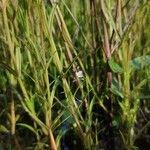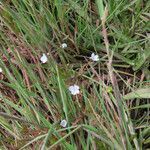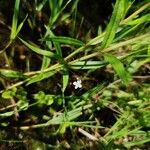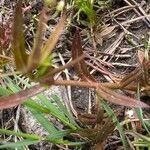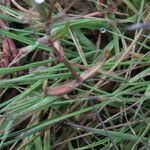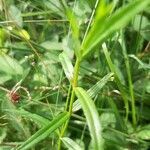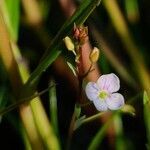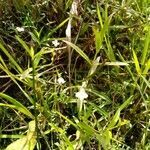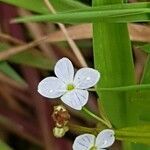Glabrous perennial or possibly annual; stems thin, weak, to c. 35 cm long, usually simple, sometimes rooting at nodes. Lvs sessile, 2-6 × 0.1-1.2 cm, usually linear, sometimes linear-lanceolate, remotely serrulate; apex acute or subacute. Racemes axillary, alternate (1 to each opposite pair of lvs), very slender and flexuose; peduncles to c. 12 cm long; pedicels very slender, 5-13 mm long, much > linear bracts. Calyx c. 2 mm long; lobes ovate, ± acute. Corolla c. 6 mm diam.; lobes whitish with bluish veins. Capsule 2-lobed, 3-4.5 mm wide, glabrous, > calyx. Seeds oblong-obovate, very flattened.
A herb. It keeps growing from year to year. It grows 10 cm high and spreads 30 cm across. The leaves are opposite or in rings. They are simple and entire. The flowers are pale blue.
